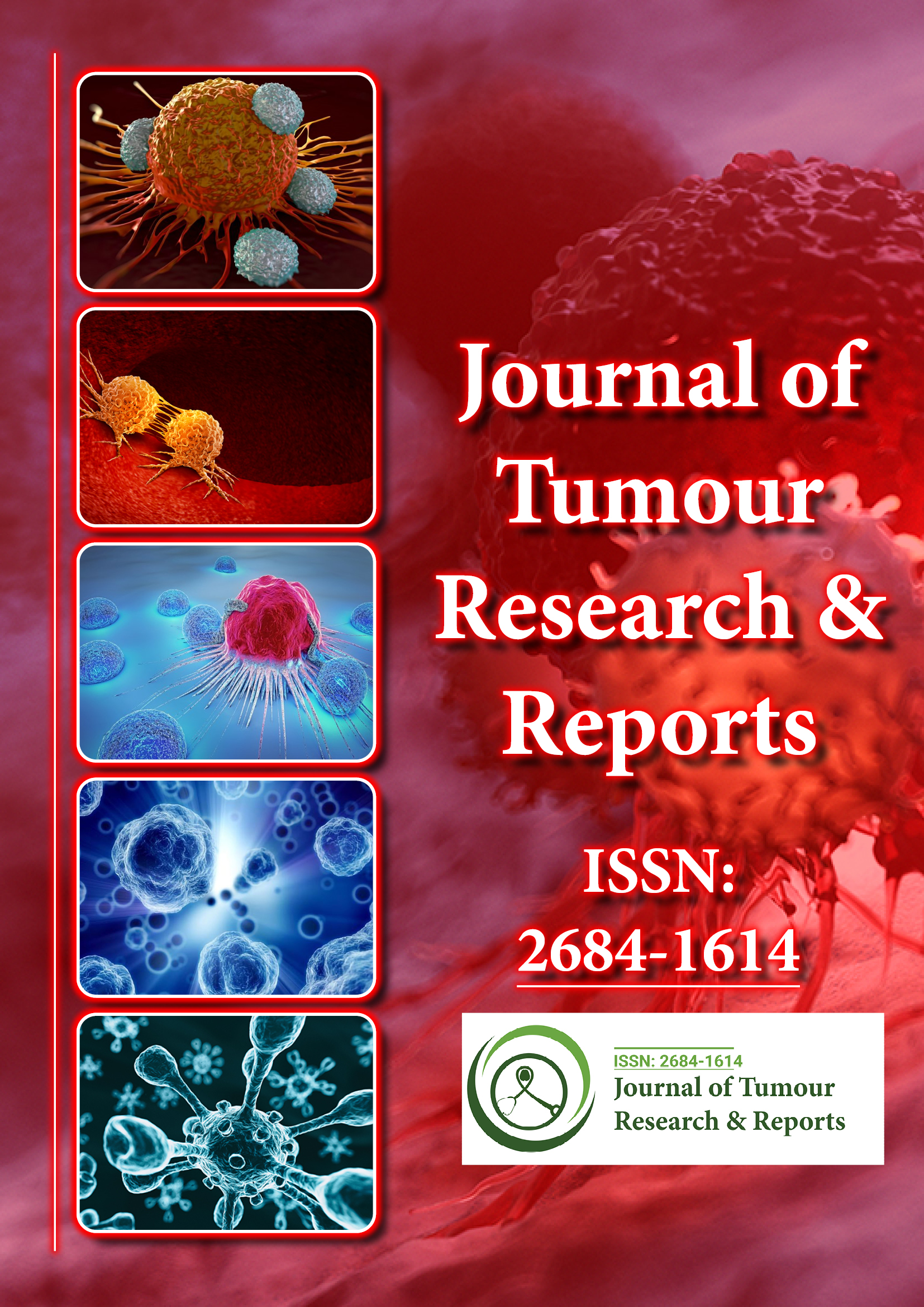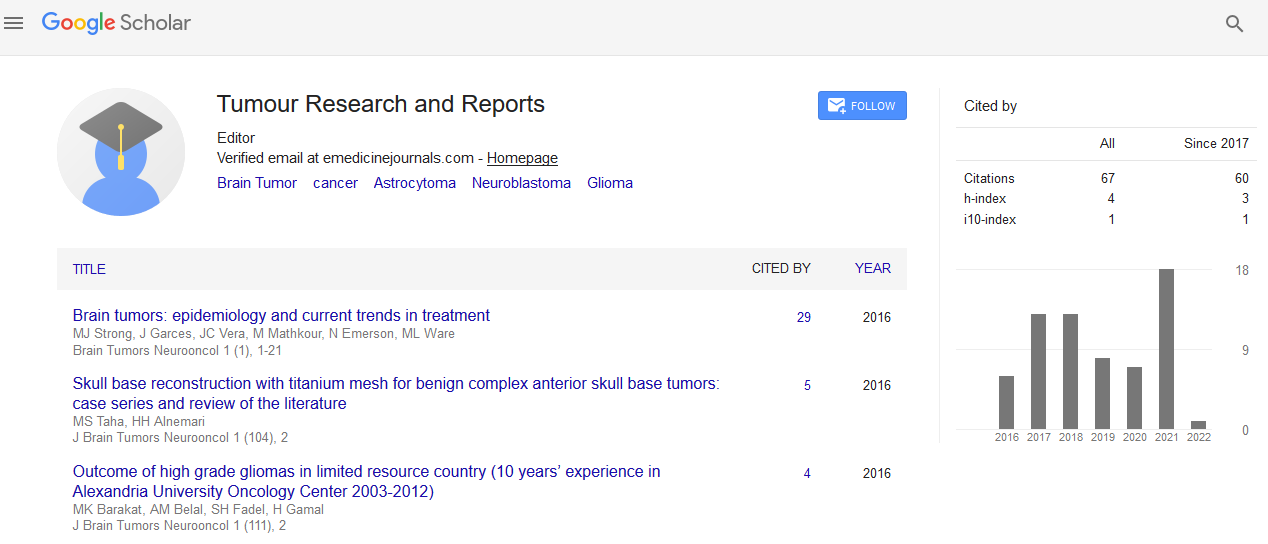Indexed In
- RefSeek
- Hamdard University
- EBSCO A-Z
- Google Scholar
Useful Links
Share This Page
Journal Flyer

Open Access Journals
- Agri and Aquaculture
- Biochemistry
- Bioinformatics & Systems Biology
- Business & Management
- Chemistry
- Clinical Sciences
- Engineering
- Food & Nutrition
- General Science
- Genetics & Molecular Biology
- Immunology & Microbiology
- Medical Sciences
- Neuroscience & Psychology
- Nursing & Health Care
- Pharmaceutical Sciences
Commentary - (2025) Volume 10, Issue 2
The Role of Inflammation in Tumourigenesis: From Chronic Irritation to Malignant Transformation
Aisha Rahman*Received: 30-May-2025, Manuscript No. JTRR-25-29817; Editor assigned: 02-Jun-2025, Pre QC No. JTRR-25-29817 (PQ); Reviewed: 16-Jun-2025, QC No. JTRR-25-29817; Revised: 23-Jun-2025, Manuscript No. JTRR-25-29817 (R); Published: 30-Jun-2025, DOI: 10.35248/2684-1614.25.10.256
Description
Cancer and inflammation have long been linked, with physicians as far back as the 19th century observing that tumours often arise in sites of chronic irritation or injury. Today, it is well established that inflammation is not merely a byproduct of tumour growth but a driving force in tumourigenesis. The relationship between chronic inflammation and cancer is complex, involving interactions between immune cells, cytokines, growth factors, and the microenvironment. While acute inflammation is part of the body’s normal defense mechanism, chronic inflammation creates conditions that promote DNA damage, cell proliferation, and angiogenesis—all hallmarks of cancer. Understanding the role of inflammation in tumour development provides insight into prevention, diagnosis, and treatment of many malignancies.
Chronic inflammation can arise from a variety of sources, including persistent infections, autoimmune disorders, environmental toxins, and lifestyle factors such as smoking or obesity. One of the clearest examples is the link between Helicobacter pylori infection and gastric cancer. The bacteria induce chronic gastritis, leading to DNA damage and eventually malignant transformation. Similarly, chronic hepatitis B or hepatitis C infections are major risk factors for hepatocellular carcinoma, as the persistent immune response to infected cells creates an environment conducive to tumour development. Inflammatory bowel diseases, such as ulcerative colitis and Crohn’s disease, also increase the risk of colorectal cancer due to continuous cycles of injury and repair in the intestinal lining. These examples illustrate how ongoing inflammation can set the stage for malignancy.
At the molecular level, inflammatory cells release reactive oxygen and nitrogen species that damage DNA, proteins, and lipids. This oxidative stress contributes to mutations and genomic instability, providing the raw material for tumour evolution. Meanwhile, cytokines such as interleukin-6 (IL-6) and tumour necrosis factor-alpha (TNF-α) promote cell proliferation and survival, tipping the balance away from apoptosis. Growth factors like vascular endothelial growth factor (VEGF) stimulate angiogenesis, ensuring a blood supply to support expanding tumours. The extracellular matrix is remodeled by enzymes such as matrix metalloproteinases (MMPs), facilitating invasion and metastasis. Together, these inflammatory processes create a fertile ground for malignant transformation.
The tumour microenvironment (TME) often resembles a site of chronic inflammation. Tumour-associated macrophages, neutrophils, and lymphocytes infiltrate the tissue, secreting cytokines and growth factors that support cancer progression. Rather than eliminating malignant cells, the immune system becomes co-opted into promoting tumour survival. This paradox highlights the dual role of the immune system in cancer: while it has the capacity to destroy malignant cells, it can also, under chronic inflammatory conditions, promote tumour growth. The polarization of macrophages into pro-tumourigenic M2 phenotypes is a striking example of how the immune system is subverted.
Epidemiological studies further confirm the connection between inflammation and cancer. Individuals with chronic inflammatory diseases consistently show higher rates of malignancy, while the use of anti-inflammatory medications such as aspirin has been associated with reduced cancer risk. Aspirin’s ability to inhibit cyclooxygenase (COX) enzymes, which mediate the production of pro-inflammatory prostaglandins, is believed to underlie its protective effect. Clinical trials are ongoing to evaluate the role of nonsteroidal anti-inflammatory drugs (NSAIDs) and other agents in cancer prevention, particularly in high-risk populations. However, the potential side effects of long-term use, such as gastrointestinal bleeding, highlight the need for careful risk-benefit analysis.
Targeting inflammation is also a promising therapeutic strategy for established cancers. Drugs that block cytokine signaling, such as interleukin-6 inhibitors, are being investigated for their ability to disrupt tumour-promoting inflammation. Immunotherapies, including immune checkpoint inhibitors, aim to reprogram the immune system to attack rather than support tumours. Combining anti-inflammatory approaches with conventional therapies may enhance treatment efficacy, as inflammation often contributes to resistance. For example, inflammatory signals can activate survival pathways that counteract the effects of chemotherapy or radiation. By dampening these signals, anti-inflammatory agents may improve patient outcomes.
Citation: Rahman A (2025). The Role of Inflammation in Tumourigenesis: From Chronic Irritation to Malignant Transformation. J Tum Res Reports. 10:256.
Copyright: © 2025 Rahman A. This is an open-access article distributed under the terms of the Creative Commons Attribution License, which permits unrestricted use, distribution, and reproduction in any medium, provided the original author and source are credited.

